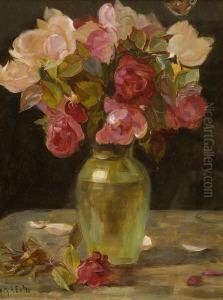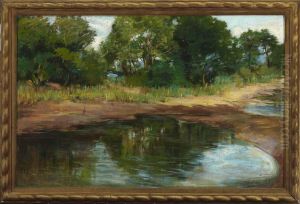Judith Exter Paintings
Judith Exter, often known as Alexandra Exter or Aleksandra Ekster, was an avant-garde artist primarily known for her work in Cubist, Constructivist, and Futurist styles. Born as Alexandra Grigorievna Exter on January 6, 1874, in Białystok, which was then part of the Russian Empire and is now in Poland, she was a leading figure in the Russian avant-garde movement that was influential in the early 20th century.
Exter's education began in Kiev, and later she studied painting at the Paris École des Beaux-Arts. The time she spent in Paris from 1907 to 1914 was particularly influential on her work. She became involved with the most innovative artistic circles, meeting and drawing inspiration from artists like Pablo Picasso, Georges Braque, and others. Her exposure to the vibrant cultural milieu of pre-war Paris had a profound impact on her artistic direction.
During her career, Exter was known not only for her paintings but also for her work in theater design and teaching. She was a participant in the most significant exhibitions of Russian art in the 1910s, including the 0.10 Exhibition in 1915, where the Russian avant-garde was first presented as a movement. Alexandra Exter played a critical role in the development of non-objective art in Russia and is recognized for her exploration of dynamic composition, vibrant color palettes, and innovative use of materials and space.
After the Russian Revolution, Exter remained in the Soviet Union for some time, teaching at Kiev and Odessa art schools. However, as the political climate changed and the avant-garde began to fall out of favor with the Soviet regime, she found herself increasingly at odds with the government's artistic prescriptions. In 1924, she emigrated, returning to Paris, where she continued to work and exhibit her art.
In her later years, she was also involved in costume and set design for theater productions, collaborating with various directors and bringing her avant-garde sensibility to the performing arts. Unfortunately, as World War II engulfed Europe, her circumstances became difficult, and she died in poverty in Fontenay-aux-Roses, near Paris, on March 17, 1945. Despite her challenging final years, Alexandra Exter's legacy lives on through her contributions to modern art, and she remains an important figure in the study of European avant-garde movements.

